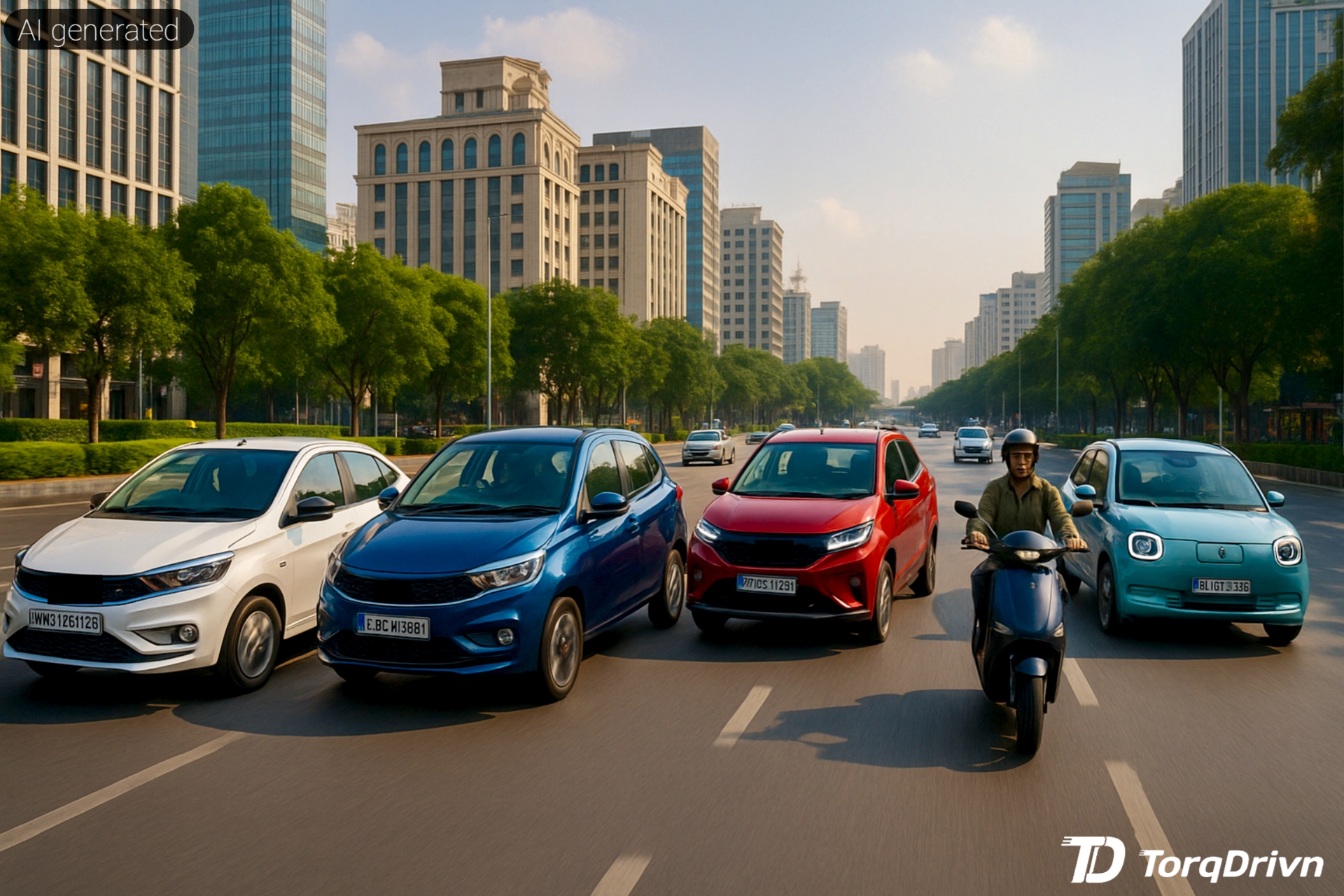India’s electric vehicle market is experiencing significant growth, but the question remains: can we realistically achieve widespread EV adoption by 2030? Based on current data and market trends, the answer is more nuanced than a simple yes or no.
Current Market Performance
India’s EV sales have shown steady progress. In Q1 2025, the country sold 514,198 electric vehicles, representing an 8% share of total automobile sales. With over 5.91 million EVs now registered, the foundation for growth is clearly established.
The segment breakdown reveals interesting patterns. Two-wheelers lead with 59% of EV sales, dominated by companies like Bajaj Auto, TVS, and Ola. Three-wheelers contribute 34%, while four-wheelers account for just 6% of sales. This distribution highlights where India’s EV success is concentrated and where challenges remain.
Geographically, states like Maharashtra, Karnataka, Uttar Pradesh, and Delhi show the strongest adoption rates, particularly for two-wheelers and e-rickshaws.
Government Support and Infrastructure
The government’s commitment is evident through the PM E-DRIVE scheme, which allocates ₹10,900 crore for EV adoption and infrastructure development. The plan includes installing 72,000 public charging stations by 2026, with ₹2,000 crore specifically earmarked for charging infrastructure.
State-level policies complement central initiatives. Maharashtra’s EV policy offers subsidies up to ₹2 lakh for electric transport vehicles and complete toll exemptions on major expressways. Uttar Pradesh provides ₹5,000 subsidies for e-two-wheelers along with full waiver of registration fees.
The charging infrastructure has expanded significantly, growing from 11,903 stations at the end of 2023 to 26,367 by April 2025. Karnataka leads with 5,880 stations, followed by Maharashtra with 3,746 and Delhi with 1,951.
Realistic Segment-wise Outlook for 2030
- Two-wheelers: Highest potential with 30–35% EV penetration by 2030. Cost parity expected by 2027. Battery-as-a-Service (BaaS) models are gaining traction.
- Three-wheelers: Likely over 50% penetration, driven by commercial and last-mile applications.
- Four-wheelers: May reach low double-digit penetration. High upfront cost and limited infrastructure remain barriers.
- Commercial vehicles: E-buses may reach 20–25% adoption; electric trucks could reach 10–15% by 2030.
Key Challenges Ahead
- Cost Barrier: EVs, especially four-wheelers, are still 15–30% more expensive than ICE alternatives.
- Infrastructure Disparity: 70% of chargers are concentrated in Tier 1 and Tier 2 cities. Rural regions lag behind.
- Grid Readiness: Charging stations consumed 764 MU from April 2024 to February 2025. Delhi alone accounts for 40% of that demand.
- Supply Chain Constraints: Over 80% of battery materials are imported. Recycling and domestic gigafactory capacity are still developing.
Expected Outcomes by 2030
Based on current trends and planned initiatives, India will likely achieve the government’s target of 30% EV penetration in new vehicle sales by 2030—driven largely by two- and three-wheelers.
The country is projected to have around 1 million charging stations, particularly in metro areas and along major highways. Rural coverage will expand, but more slowly unless targeted incentives are introduced.
Environmental and economic gains: Projected savings include 70 million tonnes of CO₂ reduction annually, a cut in oil imports worth ₹40,000 crore, and the creation of approximately 2 million jobs.
The Bottom Line
India will not become a 100% EV nation by 2030, but it will make substantial progress toward a cleaner mobility future. The EV transition will be uneven, with urban areas and two-wheelers leading the shift.
Success depends on continued policy support, infrastructure scaling, local manufacturing, and public awareness. The goal by 2030 is not total transformation, but laying a strong foundation for the decade ahead.
India’s EV journey reflects a pragmatic shift—ambitious, grounded, and critically important for sustainable growth.



Heloo